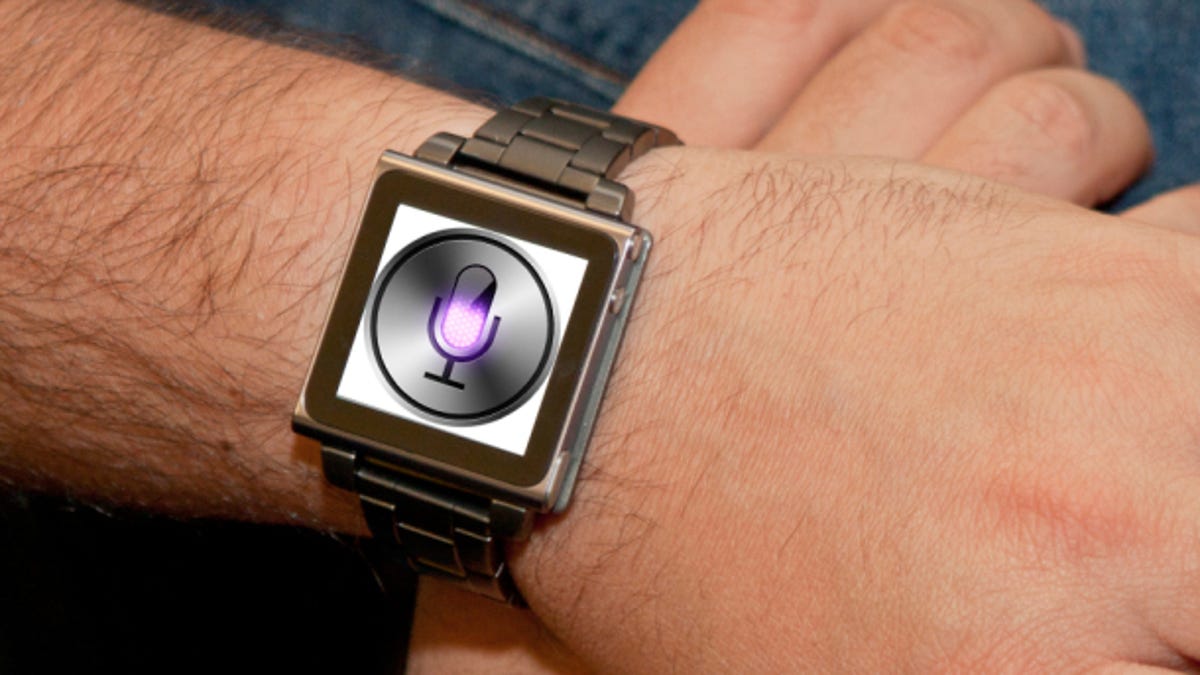Apple's quest for an iWatch on every wrist
The challenge for Apple and others trying to crack the code on wearables is to produce an appealing device for a mass market that doesn't need a watch to tell time and doesn't want to get all wound up by an overly complicated gadget.

Many signs are pointing to Apple incubating a wearable wristband, perhaps an "iWatch," given all the trademark applications the company has filedfor the name. Apple is reportedly moving around some of its top engineers, and is hiring experts in sensors and in digital fitness and medical technologies, to build up a special task force to create a product that can follow in the grand footsteps of the iPod, iPhone, and iPad. The company has also filed 79 patents containing the word "wrist."
Read: 9to5Mac: iWatch's novelty emerges as Apple taps sensor and fitness experts
During an interview at the D11 conference in May, Apple CEO Tim Cook, who wears a Nike Fuel Band and has been on Nike's board of directors since 2005, coyly said that he found wearable computing "profoundly interesting" and "ripe for exploration."
It could be that Apple is working on a competitor to Google Glass, but the company isn't telling. Cook has categorized Google Glass, which works with the iPhone, as more of a niche item that's "probably more likely to appeal to certain markets." In any case, the iGlass name is taken -- it's a 3D glassblowing simulation iOS app.
Cook pointed out the difficult task in front of Apple's growing team dedicated to wearables. He cautioned that "you have to convince people it's so incredible you want to wear it," noting that most young people don't wear watches on their wrists.
Apple's team has a great deal of research material to work with in its quest to develop an "incredible" iWatch. The smartwatch category is littered with failed products and teeming with new attempts to crack the code. So far, none of the candidates, which are primarily accessories for Android and iOS smartphones, have reached critical mass.
The Pebble Watch, which has music controls, text messaging, call notifications, and a mini-app platform, and the Martian Passport Watch, which screens phone calls and messages and even makes phone calls, are among the recent entrants. Sony is revamping its Smart Watch, and Samsung and Microsoft are reportedly also working on wrist-bound devices.
CNET Review: Basis Band
CNET Review: Pebble Watch
CNET Review: Martian Passport Watch
CNET Review: MetaWatch Strata Stealth
CNET Review: Sony Smart Watch
A modern smartwatch wouldn't be complete without sensors and apps for fitness and health monitoring, such as those provided by the Jawbone Up, the Nike FuelBand, the Fitbit Flex, and the Basis Band.
No doubt Apple can come up with a compelling design and engineering magic to deliver the most elegant looking smartwatch that materials science and industrial design can render.
The challenge for Apple and others trying to crack the code on wearables is producing a device that appeals to a mass market that doesn't need a watch to tell time or view blockbuster movies. The user experience for the tiny screen must feel intuitive and be simple to operate -- otherwise it will scare away the nongeeks. It can't frustrate users with physical or virtual button controls that require complex combinations to perform a function, or a battery that lasts only a few days.
Apple has done this kind of development triage with its other mobile products, which involves eliminating functions rather than trying to satisfy every possible user need. CNET's Scott Stein has reviewed most of the smartwatches in recent history and is a fan of the iPod Nano watch. He suggests that the key to a successful iWatch is replicating the app platform formula and cool design that fueled the growth of the iPhone and iPad, but at a price far less than that of an iPhone or iPad.
Read: Nine things the iWatch (or any other smartwatch) needs
I'd expect a wearable device to work with multiple apps, not just one. And I'd want to interact via touch, voice, or both, with software hooks into supported apps. Most smartwatches I've seen are limited to a custom app that funnels certain functions. Apple could bake a deeper level of iWatch support right into iOS, and even let other app developers build support for it via an SDK, too. Imagine motion-tracking games, health tech providers building monitoring systems that work via an iWatch...or specific watch apps for other outdoor needs (sports, travel, weather, and so on). Follow a live sports event on your watch with second-screen updates. Load custom Twitter or IM feeds. Turn it into a remote control, or even a wearable baby monitor screen. If there's any way for a smartwatch to break out of its definitional niche and become a killer device, it's with app support.
The iWatch has been pegged by Apple watchers for launch either later this year or next year. Whenever an iWatch appears, the expectations are high that it will redefine the smartwatch category as an extension of the iOS platform, and sell in the tens of millions in the first year. If not, the Apple watchers will start to question whether the company is losing its magic touch.

